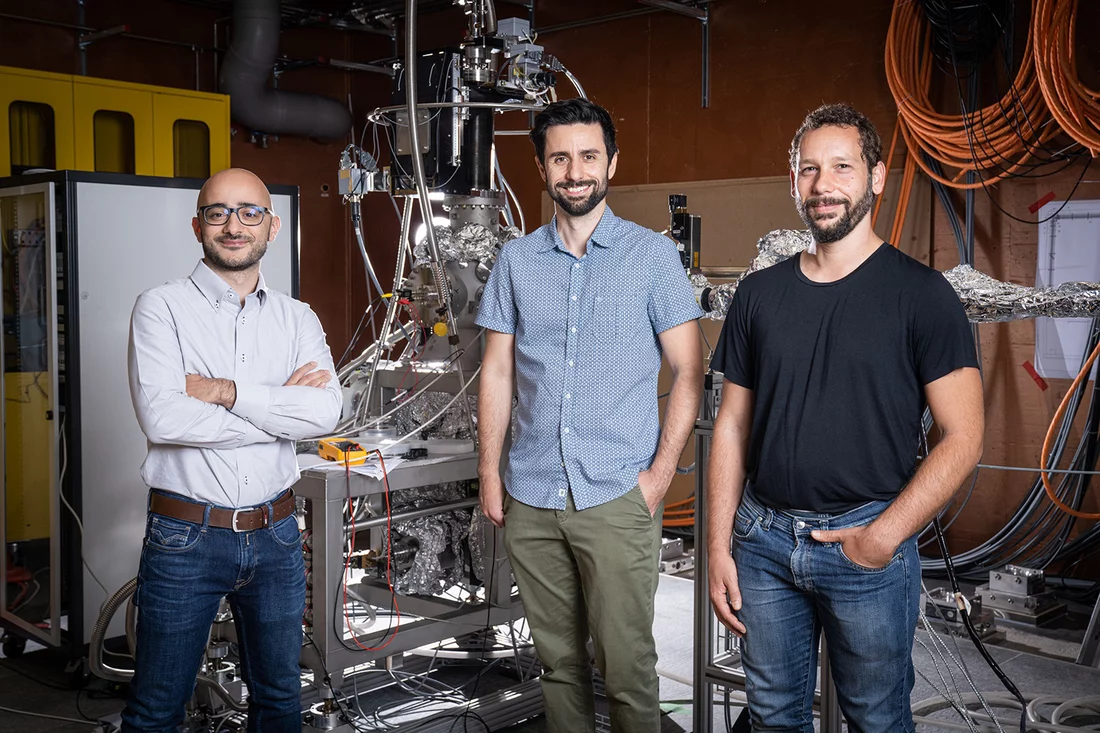It's another milestone on the path to full operation of the X-ray free-electron laser SwissFEL with five experiment stations in all: "First light" at the experiment station Furka. It clears the way for experimental possibilities that are unique worldwide. Team leader Elia Razzoli explains what the Furka Group is planning to do.
Why is "first light" such an important occasion for your team?
Elia Razzoli: It means we're in business. Or to be more specific: Now we can begin working on the first experiments.
The general public might imagine that you simply flip a switch, and then the light is there. But presumably it's not that simple in your case . . .
No, it is a complex task. When we at SwissFEL talk about light, we do not mean visible light, but rather X-ray light with characteristics that are unique in the world. To generate that light, and for research to be able to use it, several teams at PSI have to work together. With the Furka experiment station we are, so to speak, at the end of the food chain. To generate the X-ray light of SwissFEL, electrons must be forced onto a sinuous track with the aid of magnets. In the process, they emit the X-ray light that we need to carry out the actual investigations. The magnets that redirect the electrons in this way are called undulators. And they are precisely what makes the whole thing so difficult, because they have to work exactly in sync; otherwise the X-ray light doesn't have the quality that we need. The complexity of the system grows exponentially with the number and length of the undulators. That is why first light at Furka is already a masterful technical and organisational feat.
What comes next?
The first test experiments are currently under way, in which we vary parameters to see whether everything behaves as desired. We are carrying out experiments with diffraction, in which we can measure the distances between individual atoms in crystal structures, and with absorption, where we vary the wavelength of the X-ray light and look at how much energy is absorbed in the material depending on the wavelength. This is important if we want to carry out more ambitious spectroscopic experiments later. Then, over the next six to eight months, we will start up the system and familiarise ourselves with focusing and detecting the X-ray beam. Then in 2022 we will start the first scientific experiments with external users.
What experiments are you planning?
The research area on the Athos beamline is experiments with soft X-rays. Our colleagues at the Maloja experiment station, which is already in operation, are mainly looking at liquid and gaseous substances. At Furka, we specialise in solids, which we study at very low temperatures. We can cool them down to -263 ° Celsius, around ten Kelvin above absolute zero. We use spectroscopy to observe the electrons in the atoms that are responsible for the physical properties of substances, such as superconductivity for example.
Why can that only be done at SwissFEL?
The X-ray free-electron laser SwissFEL is unique in the world. It delivers pulsed X-ray light, and the pulses are unimaginably short, in the range of femtoseconds or even less – that is a millionth billionth of a second. With that we can, for example, look at chemical reactions as if in a movie filmed with an extremely fast high-speed camera. For Athos, we have developed special systems called CHIC and APPLE-X that allow us to manipulate the electron beam of SwissFEL and generate X-ray light with unique properties more or less à la carte.
Will practical applications also result from this research?
The results of experiments our colleagues conducted 50 years ago can be found today in every smartphone, for instance in the semiconductor materials of the microchips. Naturally, we hope that our experiments too will one day enable advances in electronics, or in quantum computing technology. We are interested, for example, in materials whose magnetic states can be switched lightning-fast. That is of interest for coming generations of computer hard drives with extremely high storage density. But first and foremost, we are researchers who want to make new discoveries. Maybe we will even find novel quantum states, such as light-induced topological phases, that could be of fundamental importance in the search for so-called Majorana-like particles. These particles are exotic quantum states that could revolutionise our approach to quantum computing.
Were there delays in setting up Furka due to the coronavirus restrictions?
We observe the hygiene requirements, for example that there should not be too many people in the same room. Normally four to six researchers work together at an experiment station, and from time to time there are still more researchers from external partners. That was not going to work, but we organised ourselves so that there were hardly any delays. Besides, experiment stations like Furka are so automated that you can carry out a lot of tests virtually from the kitchen table.
Text: Bernd Müller
Contact
Elia Razzoli, PhD
Head of the Furka Group
Laboratory for Advanced Photonics
Paul Scherrer Institute, Forschungsstrasse 111, 5232 Villigen PSI, Switzerland
Telephone: +41 56 310 26 07, e-mail: elia.razzoli@psi.ch
Further information:
https://www.psi.ch/en/swissfel/furka
Copyright
PSI provides image and/or video material free of charge for media coverage of the content of the above text. Use of this material for other purposes is not permitted. This also includes the transfer of the image and video material into databases as well as sale by third parties.


